Tamarind is one of the most important ingredients in Thai cuisine, especially for our most famous dish, pad thai. While many Asian markets carry jars of ready-to-use tamarind paste, some of us can only find solid blocks of tamarind pulp. Not to worry, in this post I will show you how to turn that pulp into liquid tamarind that can be used in any Thai recipe. It may be more work, but it's easy and 100% more flavourful than store-bought ones!
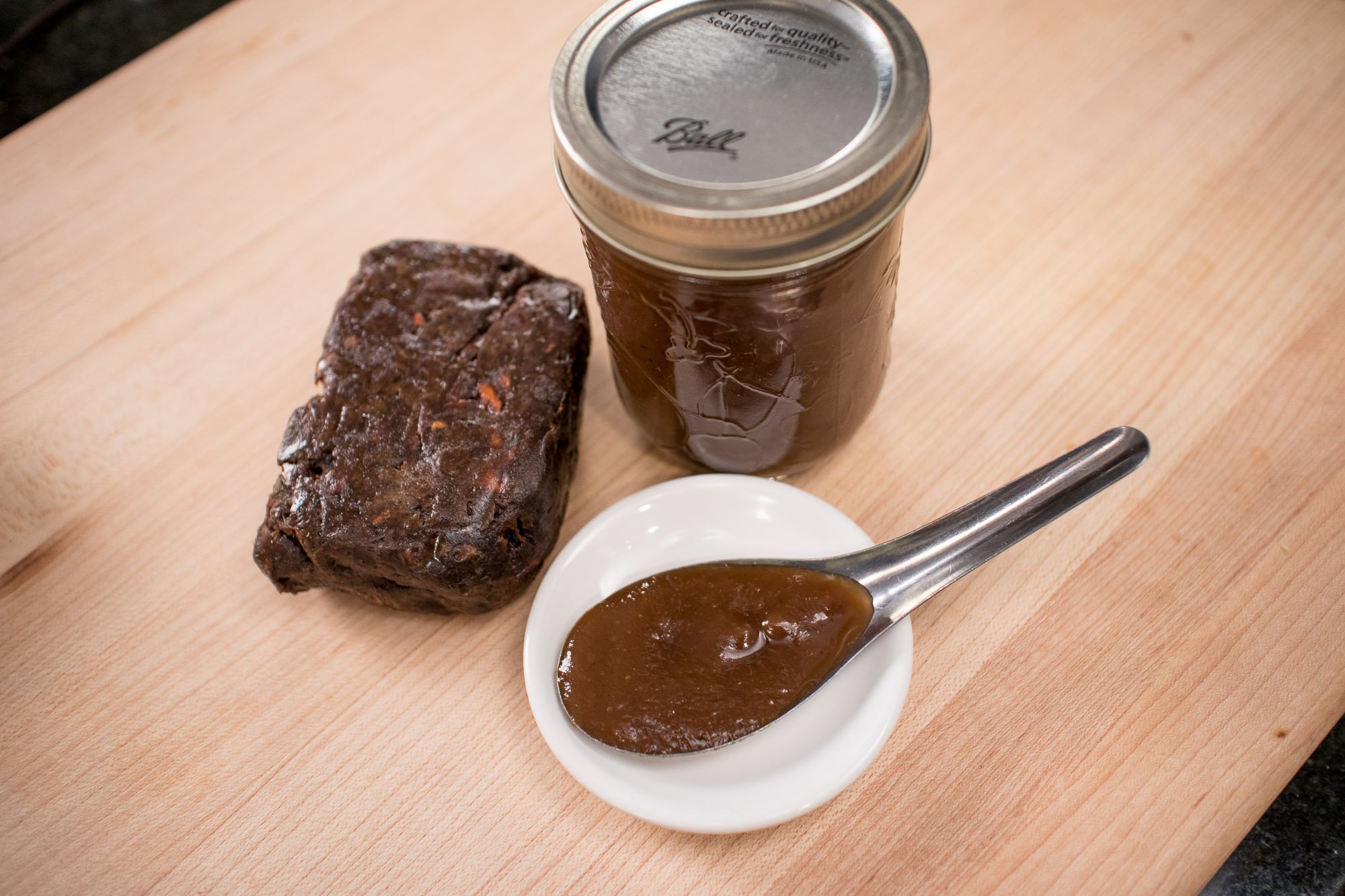
Want to save this recipe?
But first, what is tamarind?
Simply put, tamarind is a fruit. Its sticky brown flesh ranges from being very sweet to very sour, depending on the variety. The sweet ones are for eating as snacks, and the sour ones are turned into a liquid that we then use to add acidity to many dishes.
The liquid form of sour tamarind used for Thai cooking is referred to in English differently by different people. I've seen it written as tamarind paste, tamarind water, tamarind juice, and tamarind concentrate. (Note: it is NOT a concentrate as you literally add water to tamarind to dilute it into a liquid. This is a misnomer, but often how many commercial brands label their product). This causes confusion, I know, but if you're working off of a recipe written by a Thai person, know that we're all talking about the same thing.
In my recipes, I used to call it "tamarind juice," but I have switched to "tamarind paste" to avoid confusion with tamarind beverages which are labelled "tamarind juice." So on this website, if you see different terms for tamarind used in different recipes, I apologize for the inconsistency, but know that there is only one tamarind product that we use in Thai cooking, it just goes by different names!
For more general info about tamarind, check out my Ultimate Guide to Tamarind .

Should you buy tamarind paste or make it?
There is nothing wrong with buying convenient tubs of ready-to-use tamarind paste, often labelled as "tamarind concentrate," for cooking, as long as you buy THAI TAMARIND and not Indian ones, which is very different. And if you're just trying to learn a few Thai dishes, or you're very busy, I'd just buy it. But here's why I always make mine:
I used the ready-made tamarind paste for years...until I realized that the acidity was very inconsistent from tub to tub. Some would be quite sour, but more often than not store bought tamarind paste was weak and diluted, and I'd have to put a lot to get the acidity I needed.
So I started making my own, which for me is a nostalgic activity. Growing up in Thailand we always made our own tamarind paste for cooking. Every time we need it for a recipe, I'd take out a small chunk of sour tamarind, add some water to it and squeeze the pulp out with my hand so make a flavourful sour water. Any extra, we froze. Ready-to-use tamarind paste didn't become available in Thailand until I was an adult. at the store until I was an adult.
Important Tamarind Buying Tips
If you find whole tamarind fruit pods at the store, those are the sweet ones for eating as snacks NOT for cooking. Do not make this mistake as many people have done! Though you should get them anyway as they're delish :).
Tamarind for cooking comes either in ready-to-use liquid in a tub or jar, or in a brown block (pictured below). This brown block is what you need to make tamarind paste at home.
The brown block is simply compacted tamarind fruit pulp. The pulp is seedless (though I've seen some rogue seeds occasionally), but it has lots of fibers that need to be strained out.

How to Make Tamarind Paste
Here's an overview of the process, but be sure to read the recipe card and watch the video tutorial because this is one of those things that's much better understood once you see it in action. I also include more tips I didn't include here in the video!

- Pull apart tamarind pulp into small chunks.
- Place the tamarind into a large heatproof bowl and cover with hot off-the-boil water and let it sit until the water is cool enough to handle, at least 20 minutes.
- Use your hand to squeeze and scrunch the tamarind pulp so that the flesh is released from the fibers and mixes into the water. If you feel like it's too thick, and more water is needed to loosen things up, go ahead and add it.
- Once done, you should have a thick liquid in the bowl and the fibers should have barely any pulp left on them.

- Strain the tamarind paste into a pot through a sieve that is not too fine, using your hand to stir and push the pulp to help it go through. Feel free to add more water if it's too thick to go through the sieve.
- Once you're down to just the fibers, rinse the remaining fibers with a little more water to release more tamarind paste.
- You can use this right away, or for storage, cook the tamarind paste in a pot until it bubbles, and let it bubble for about 5 minutes to ensure that it is thoroughly heated. Stir it constantly to avoid splattering!
- Transfer the tamarind paste into small mason jars, close the let and let cool. Store in the fridge or freezer.
Tips for Storing Tamarind Paste
An open jar of tamarind paste can last a few months in the fridge, but eventually it will grow mold. Because of this, here are some storage tips:
- Store the tamarind paste in small glass jars, no larger than 1 cup, so each open jar does not last long.
- Store unopened jars in the freezer, and keep only 1 open jar in the fridge at any given time.
- If you rarely use tamarind, instead of keeping an open jar in the fridge, freeze the tamarind paste in ice cubes and pull out as much as you need each time. It will be helpful for you to note the volume of each cube, so you know how many to take out.
- If you are a jam-maker, you can "can" the tamarind and make the jars shelf-stable. (Caveat, I have not personally done this, but it is a high acid fruit so there should be no problems.)
Learn More About Thai Ingredients!
Understanding Thai ingredients is incredibly important in helping you cook Thai food successfully. If you want to learn more about other ingredients you'll need in Thai cooking, check out this article: The Ultimate Guide to Essential Thai Ingredients, or browse these posts to find one that interests you.
Recipes with Tamarind
Now that you've got delicious homemade tamarind paste, try using it in these recipes!
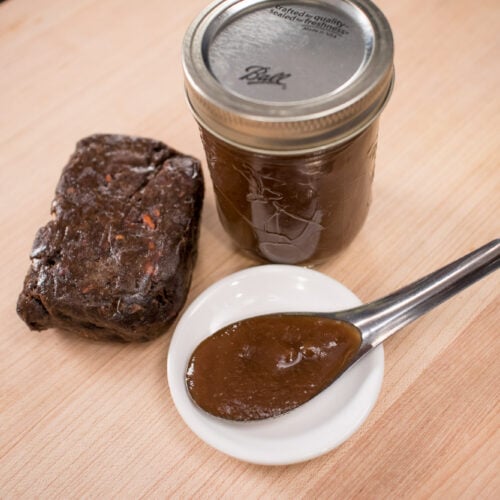
Homemade Tamarind Paste
Want to save this recipe?
Ingredients
- ½ lb seedless tamarind pulp (see note)
- 2 cups hot water
- ½ cup room temp water
Notes
FULL VIDEO TUTORIAL
All my recipes come with step-by-step video tutorials with extra tips not mentioned in the blog post, so make sure you watch the video to ensure success. If you enjoy them, consider subscribing to the YouTube Channel to not miss an episode. Thank you!
Subscribe to my YouTube ChannelInstructions
- Use your hands to pull apart the tamarind block into small chunks and place it in a large, heat-proof mixing bowl. Pour the hot water over the tamarind and let it sit until it’s cool enough for you to handle, about 20 minutes, though you can let it sit for as long as you need at this point—the longer it sits, the easier the next step will be.½ lb seedless tamarind pulp (see note), 2 cups hot water
- Use clean hands, preferably gloved, to squeeze and scrunch the pulp to loosen it from the fibers. You should end up with something that has a consistency of a smoothie. A little thinner than smoothie is fine, but too thick will make it hard to strain, so if it looks super thick add a little water.
- Once you can feel that most of the pulp has been released from the fibers, strain the tamarind mixture, into a pot through a sieve, preferably not fine-mesh as the paste will be thick and it'll hard to push through. Push as much of the liquid through as possible, and scrape the bottom of the sieve occasionally.Tip: If at any point in the process you're having a hard time because the liquid is too thick, do not be afraid to add more water. Some brands of tamarind pulp are more "pulpy" than others and require more water to loosen.
- Gradually pour about ½ cup of room temperature water over the remaining fibers in the sieve while using your hand to mix it around. This will rinse off any last little bit of tamarind still stuck in the fibers.
- You can use this right away for cooking, but for storage, cook the tamarind paste over medium high-heat until it boils, stirring constantly, as it is quite thick and can bubble and jump at you if you don’t stir. Allow it to bubble for 4-5 minutes to ensure that it is thoroughly heated through before turning off the heat.
- Transfer the hot tamarind paste to clean, small mason jars, no larger than 1 cup capacity. I like using the smaller ones so each jar will not be open for as long. Close the lids while still hot and and allow it to cool at room temperature before moving them to the fridge for storage. As it cools the lids will be sucked in and it will seal very well, like jam, but since this was not properly canned, you still need to store them in the fridge. You can also freeze them in ice cube trays and store the cubes in freezer bags.


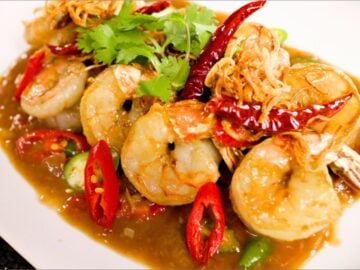
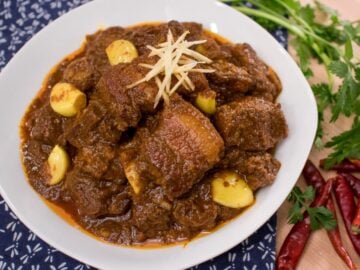
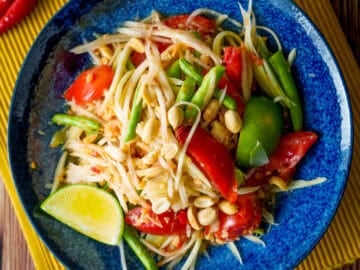




Mark says
Since moving to rural Thailand I have not made this. Yesterday I bought a bag of tamarind at the village market. They harvest the fruit from their own trees, remove the seeds and fibers. It is not even pressed into a block.
When I made paste this morning I modified the preparation at little bit. The pulp became so fine in the hot water that instead of straining it, I just put it in the jars as it was.
It's a little pulpier than yours but it it deliciously sour.
I can't wait until I use it and make som tam for dinner tonight.
Izabela says
Thank you for this recipe. I made my own tamarind paste today and I’m very proud! It’s deliciously sour - it makes you pucker.
Robert says
Hello Pai,
I will be getting some Tamarind pulp from the local market here...THANK YOU, for this info on making home-made tamarind-paste, just what i was looking for... EXCELLENT!
Nick Z. says
Perfect time to bust out the food mill if you have one. Worked nicely for me!
Bsrbara Manning says
Thanks so much for this and please help me figure out how I use the sweet Tamarind I bought that is for eating not cooking. I'd like to be able to manage this 500 G package in one go so I just really don't know how to prepare sweet tamarind. If you can help with that I promise to buy prepared paste for cooking from this point forward.